Sound Startups: Launching PEDALpUNK! — FX Pedal-to-DAW Interface
It’s safe to say that sound saved Scott Eric Olivier.
His sheer determination to make an audio impact revealed itself at the tender age of eight, when a rare hip disorder forced him to put his young mind to work while his body healed. The result was an early fascination with mathematics, music, and MIDI – a focus that proved to be a lifelong obsession.
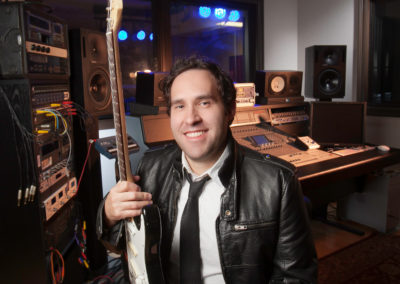
Scott Eric Olivier, creator of PEDALpUNK!, can’t approach audio any other way except as an entrepreneur.
Fast-forward a bunch of years, and not only is Olivier a busy engineer (Michael Jackson, Gwen Stefani, No Doubt, Van Halen, Christina Aguilera, Chris Cornell, Goo Goo Dolls), he’s also an active businessman. His just-debuted brainchild: PEDALpUNK!, a completely analog interface that seamlessly integrates effects pedals with DAWs – put simply, the mission of the unit is to connect software to any guitar effects stompbox that’s ever been made.
Using PEDALpUNK!, musicians and engineers can integrate effects pedals into their DAW without any loss in audio quality, while creating balanced connections of unbalanced signals. The unit is made up of a combi jack input and choice of XLR or TRS jack output, while pedals plug into the return/send effects loop.
While Olivier – a Lafayette, Louisiana to LA transplant — could have tried to peddle his pedal-centric creation to an established manufacturer and hoped they would pick it up, that path probably never even occurred to him. As you’ll see, this audio inventor with a head for business considers starting a company to be the easy aspect of the equation. It’s getting your product right – and into the right hands – that’s the hard part.
Business Name: PEDALpUNK!
Website: http://www.PEDALpUNK.com
Location: Los Angeles, CA
Founder: Scott Eric Olivier
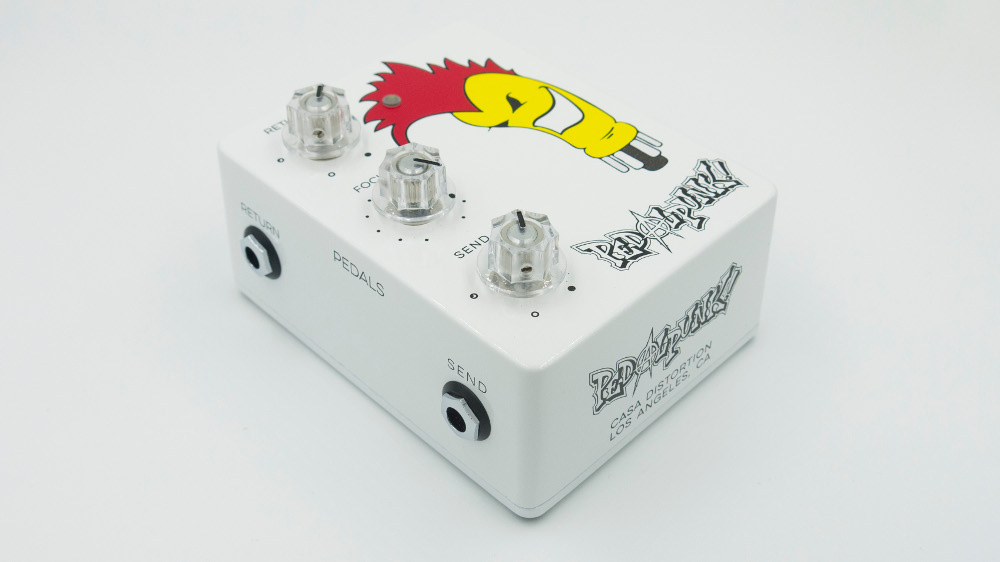
PEDALpUNK! is a new way to link any stompbox to your DAW.
Unofficial Bio: My active CV can be found at http://bit.ly/casadistortion.
I built my first computer when I was eight years old, in 1980. I was diagnosed with a hip disorder called Legg-Perthes disease so I had to wear a really weird pelvic brace and sleep in traction from early 1981-1983. During this time, I basically read, taught myself hexadecimal, binary and other types of mathematics and became really interested in music and MIDI as a controller protocol.
As soon as I ditched the brace, I did whatever odd jobs and chores an 11-year-old could do to make money, and immediately started playing drums and programming synthesizers. My parents let me and some neighborhood kids use a sledgehammer and hand saw to cut a really crude hole in the wall between my bedroom and my mother’s walk-in closet. We bought some Plexiglas and glued it to ¼” ply to make a window and nailed that over the hole in the wall. I didn’t have a soldering iron so I used twisted speaker wire to connect six ¼” female audio jacks on either side of the wall – my first patch bay.
I screwed both a mono speaker into the wall above my drum kit and a $6 microphone on the opposing wall; this became my first studio, complete with talkback. I still have the first mixer I bought at Radio Shack and it works really well for basic balancing.
I’m self-taught but my father and grandfather were both trained as Naval electrical engineers. Sadly, they both passed away long before I was able to know enough to ask decent questions about EE theory. My grandfather and both of my parents were self-employed; my mother recently retired after having a private pre-school for over forty years.
Launch Date: This may sound funny but my company began in 2004 because I was sick of paying self-employment payroll taxes and I knew I needed to get organized.
I’d been making records since 1990 but I finally started to make comfortable money when I moved to Los Angeles. I did a short tour in Australia and when I came back I was told 60% of my money was gone to US and AUS taxes. Being more than a little upset, I filed for an EIN and incorporated Casa Distortion that afternoon.
I stepped away in 2010 to start a data storage business for a few years but came back to Los Angeles in 2012 after that folded. I started getting PEDALpUNK organized almost immediately.
PEDALpUNK Genesis: PEDALpUNK! allows analog devices, such as guitar pedals, to interface with any computer’s hardware analog to digital converter without quality loss.
The 100% analog interface works with all pedals to create a transformer-balanced connection for an unbalanced device and then amplify that device’s signal back up to a level the computer’s analog to digital converter can process. Conversely, it also works as a two-stage distortion pedal and transformer-saturation device, if desired.
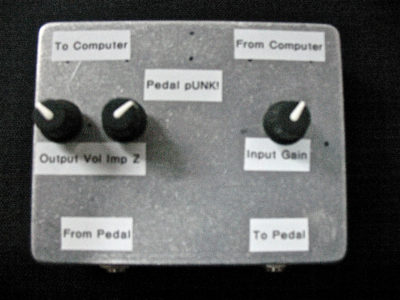
A proto-PUNK.
Making it Happen: It was really difficult. To be clear, most people think you can just plug any audio connector into any audio jack as long as the physical connector fits and the genders of the connectors comply. I had to draw a lot of pictures and write everything down to make sure I was speaking understandably when describing it to engineers.
I went through quite a batch of jokers who charged me a bunch of money for nothing but the first person to take PEDALpUNK! seriously was Dereck Tabata of Tone Freak Effects in Los Angeles. Dereck immediately understood what I was trying to do and helped me hire someone to draw a proper schematic.
The design changed pretty radically throughout the process but never lost the essence of my original design. There are a couple of other boxes that can do roughly half of what PEDALpUNK! does but they use inexpensive IC operational amplifiers where an audio transformer should be. If you want a punchy, robust sound, transformers are the way to balance.
Does it cost more doing it my way? Absolutely, it does; over 35% more but I will not degrade the source audio until the operator decides its time to distort, mangle and saturate with creative intent.
In Reality: PEDALpUNK was designed to interface the world of expensive, high-fidelity balanced audio equipment with inexpensive unbalanced audio equipment without destroying any of the gear involved.
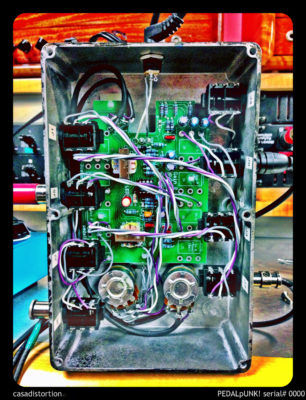
Inside the handwired design.
A pre-PEDALpUNK scenario would have included the need for the following equipment:
ReAmp: $249
Transformer Saturator (Hudson Broadcast): $275
Overdrive pedal: $119
Custom variable Impedance selector: $199
Polarity reversal cable: $19
Quality microphone preamp: $299
(2) XLR – ¼” balanced adapters: $12ea ∑ $24
A conservative grand total of $1,184 and you’d still have to understand how to hook it all up. This $1,184 is for merely ONE channel – an artist could purchase FOUR channels of PEDALpUNK! for the same amount of money. (Editor’s note: PEDALpUNK’s intro price is $349).
What are the different ways that you anticipate people will apply it in the studio?:
PEDALpUNK! users can now incorporate any and all of the more than 30,000 guitar pedals currently listed on effectsdatabase.com For this reason alone, we’ve opened up the gateway to a new form of signal processing in any stage of the recording and/or mixing process.
Any instrument, voice, or sound effect can now be modified with any guitar pedal. The fact of the matter is, humans prefer the tactile approach of turning a knob or pushing a switch to using a mouse or track ball. Also, a mouse is one virtual finger – a guitar pedal with several knobs allows sound to be manipulated in many ways simultaneously.
I also see the modern electronic producer and DJ morphing from the simple all-in-one laptop rig into the world of tactile guitar pedals. It’s very important to stand out in today’s music business and using the same digital plugins that everyone else has is a sure-fire way to never make a name for yourself as a producer or sound designer.
Motion picture Foley artists and Sound Designers will also surely begin to incorporate PEDALpUNK! into their workflows once they understand the implications of PEDALpUNK!
The Business Plan: We literally grow our base one customer at a time. If we make great products and stay true to my vision, I feel the future owners of our products will “hire” our products as people like Michael Jackson, Gwen Stefani and Chris Cornell have hired me in the past.
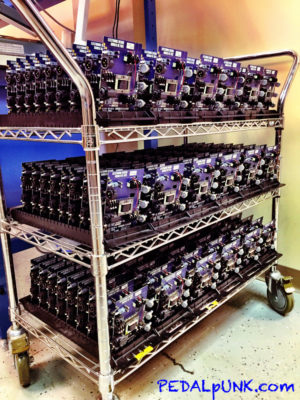
Ready to roll: PEDALpUNK! officially launched on April 25th.
PEDALpUNK! enables a shift in the methods people in studios of every size and at every level produce music. Giving producers and musicians a way to connect two audio worlds [balanced and unbalanced] and use effects pedals they already own in previously unavailable ways is going to open new sonic landscapes. Over time, the methodology can redefine the paradigm.
Starting a Company is the Easy Part: Low voltage audio products have a relatively low-cost barrier to entry. A person can set up a LLC in an afternoon but a company is not a business; Someone has to buy your products for it to be a business.
Why Being a Sonic Entrepreneur Rules: I custom make, use and refine the tools I need to enable my hands to exploit the sounds in my head. As a musician and engineer, nothing could be better than that.
Why Some Days You Want to Pack It In and Get Your Real Estate License: That has never entered my mind. Building tools and making art is what I do.
The Ultimate Business Partner: Brian Crouch, my manager and business partner.
Sage Advice: Don’t confuse working hard with wishing hard. No one is going to pay anyone else for ideas; the product must be conceived, prototyped and working to source capital and produce.
— David Weiss
Please note: When you buy products through links on this page, we may earn an affiliate commission.






